After a June with relatively few interesting visitors, I had a very interesting July 4, 2021, afternoon.
If my relatively unreliable short-term memory serves me correctly, I remember only about three warbler visits during the month of June. One of the visits was of a pair of Yellow-rumped warblers that appeared and spent a brief amount of time in the yard before leaving. But my first interesting bird on Independence Day was a male Yellow-rumped (Audubon’s) warbler that entered the watercourse for a bath. I wasn’t able to obtain any good photos, but I have many from one that had been an almost daily visitor this past spring.
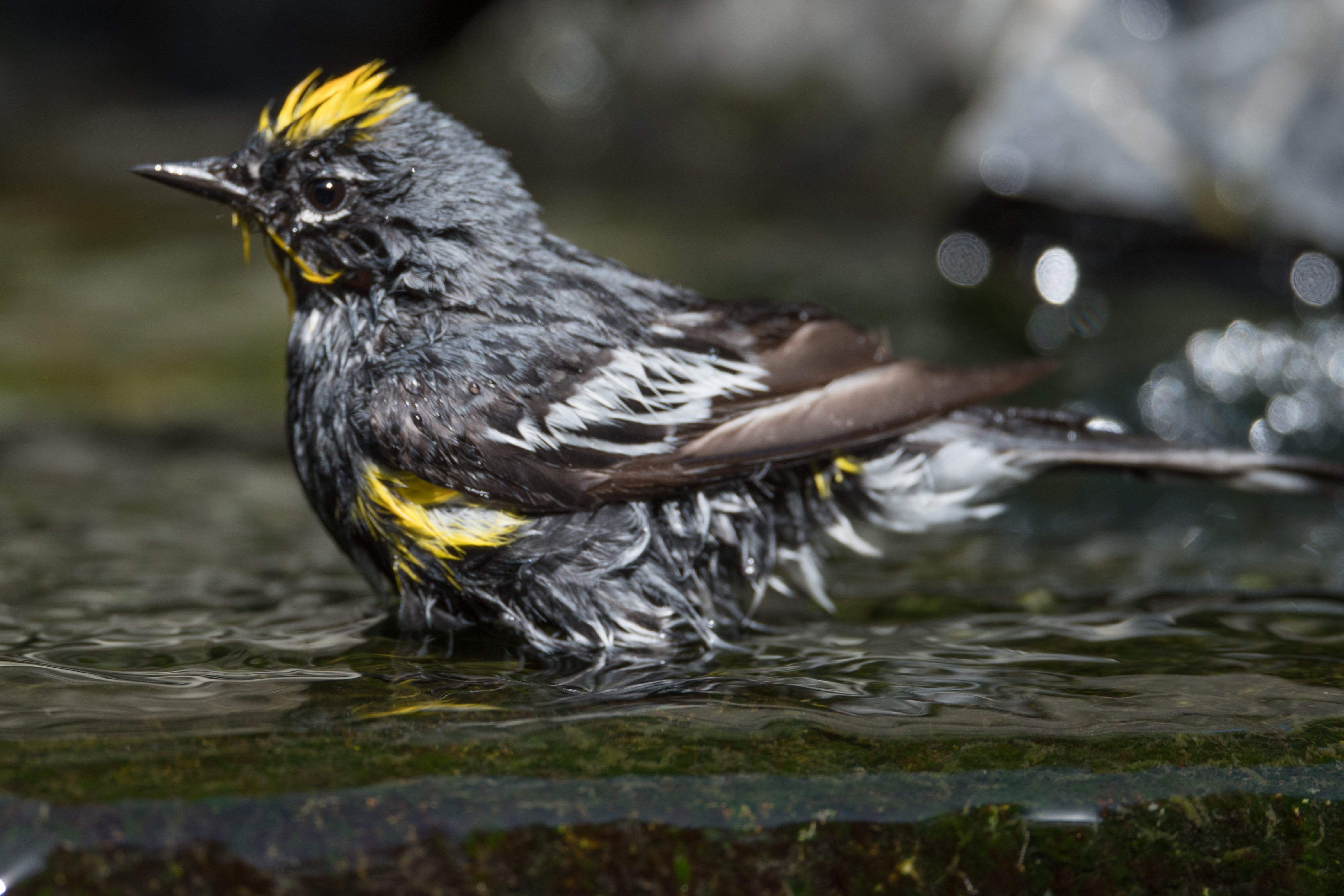
While passing time in the yard I photographed an Eastern Gray squirrel eating green madrone berries while hanging upside down. I have seen birds eating the berries but this is the first time I’ve seen a squirrel doing it.
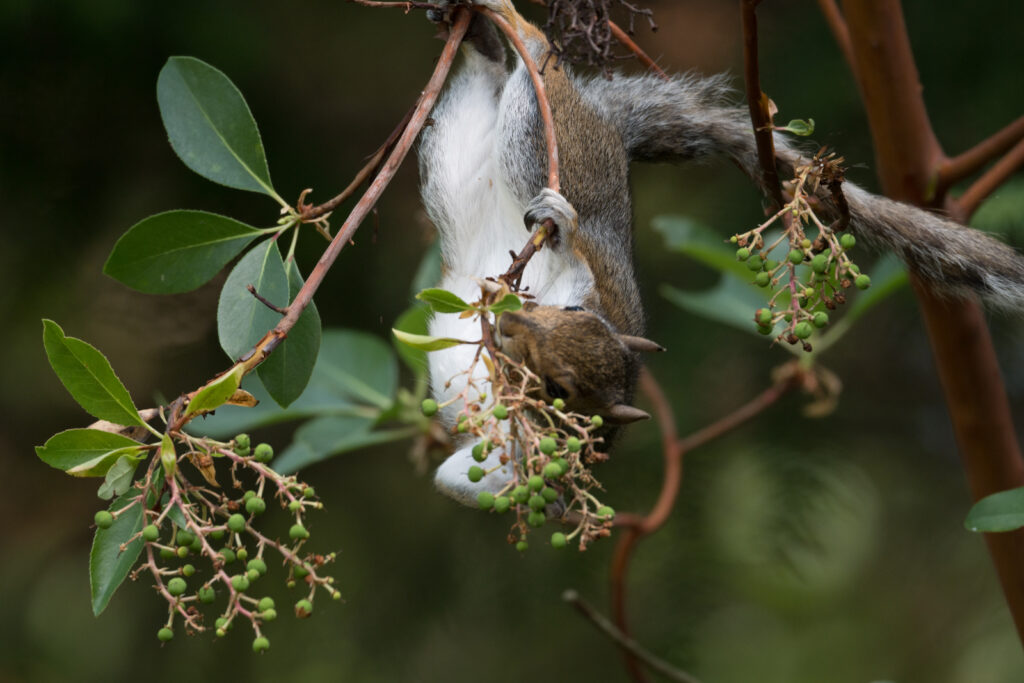
We had a visit from a Brown creeper, a regular visitor during the spring but rarer during the summer. These birds fascinate me and I always enjoy seeing and photographing them.
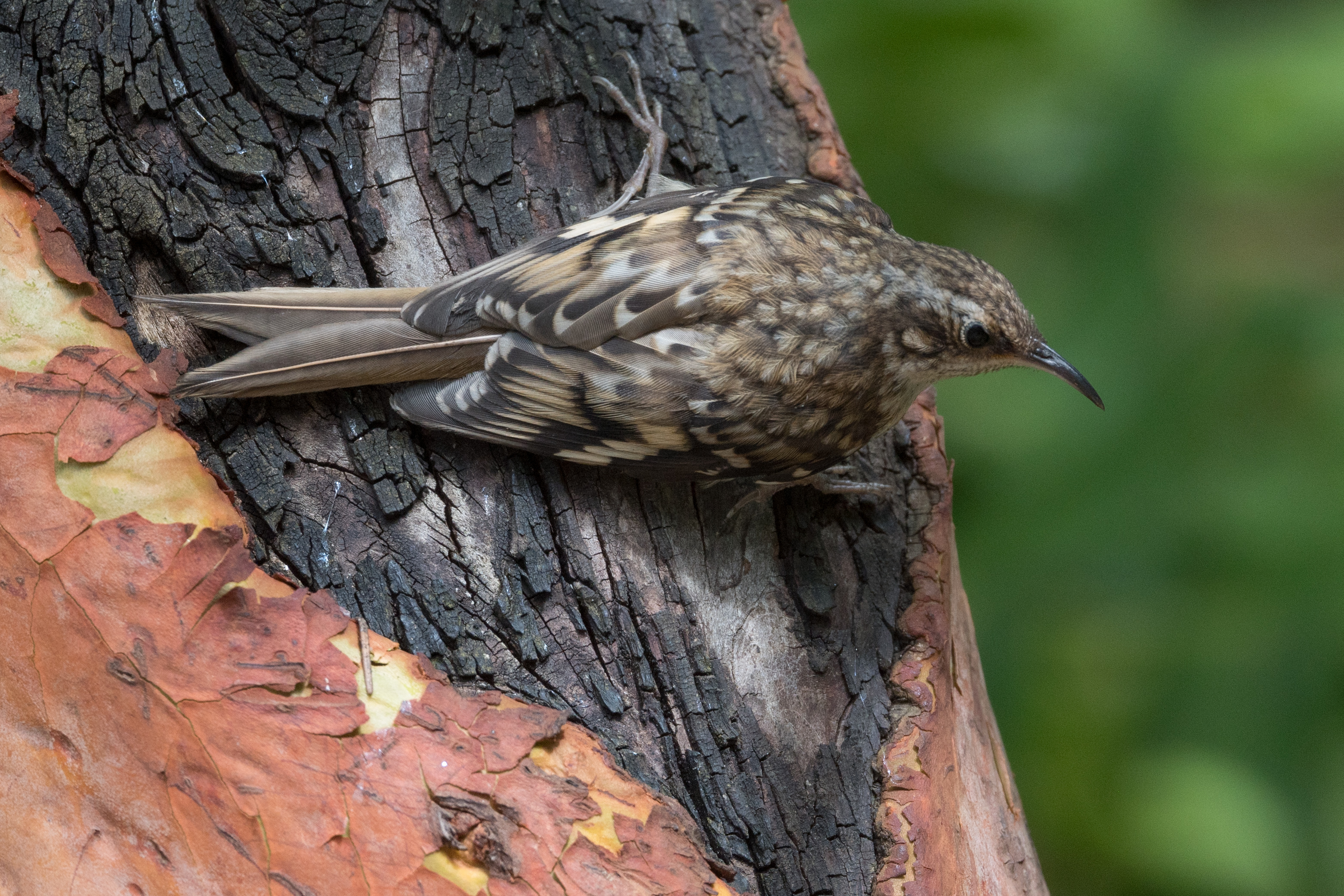
We’ve had visits from Black-headed grosbeaks since late spring. The visits are always irregular and are usually focused on a small platform feeder or inverted suet feeder. On this day we had at least two visits from a male.
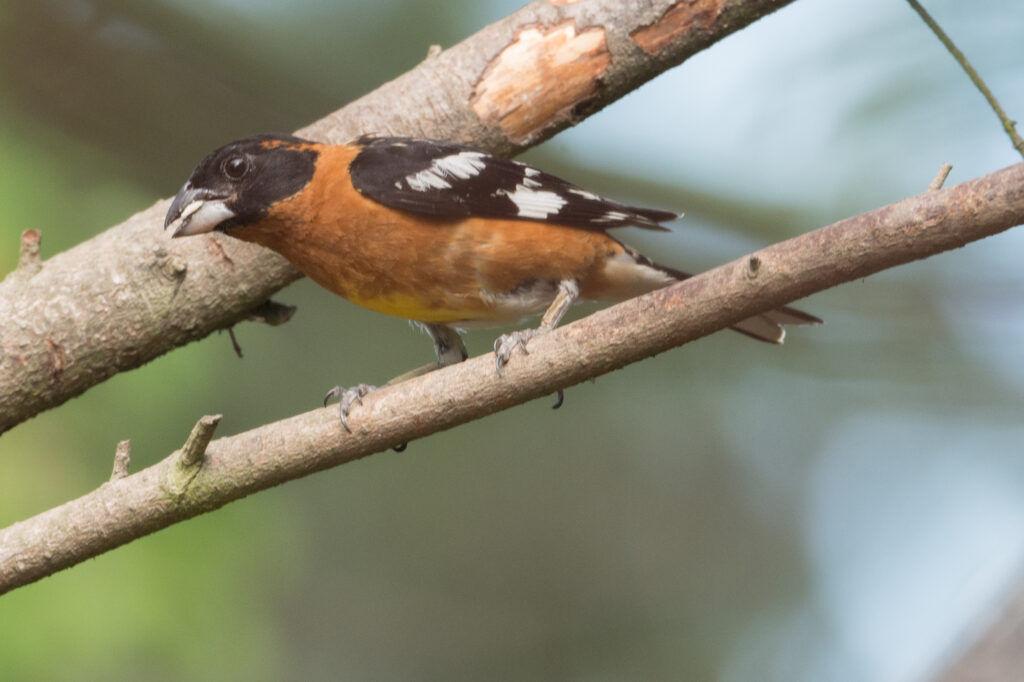
The next interesting visitor was an Orange-crowned warbler, normally a common visitor to the yard but rather rare during the spring migration this year.
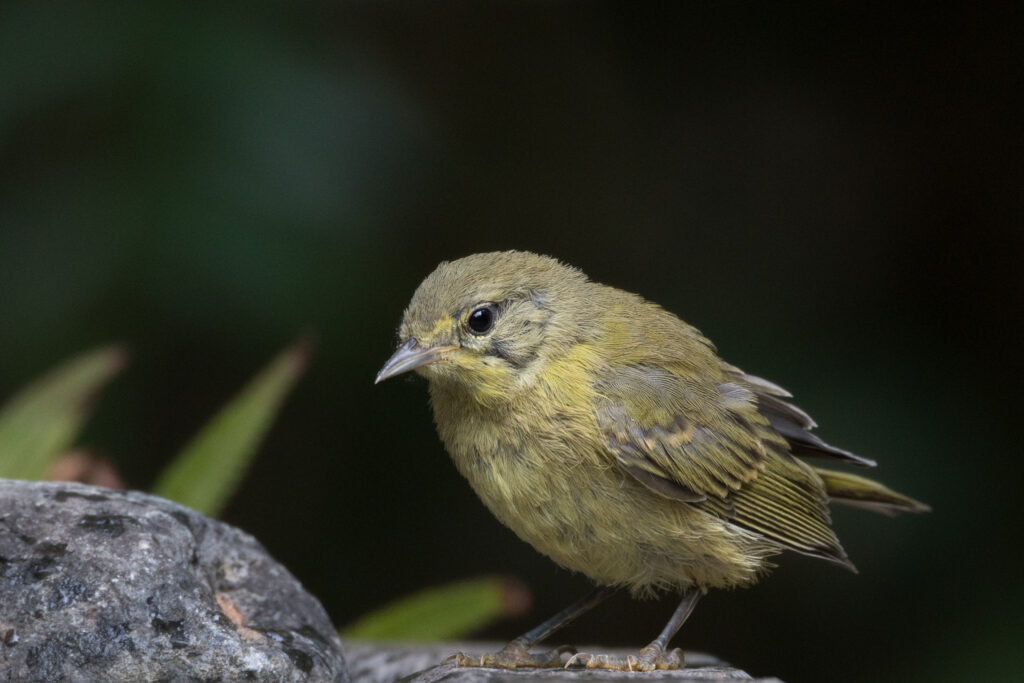
Our next visitor was a new species, which as the discoverer traditionally gives me naming rights! I named it the Anacortes Tailless Towhee.
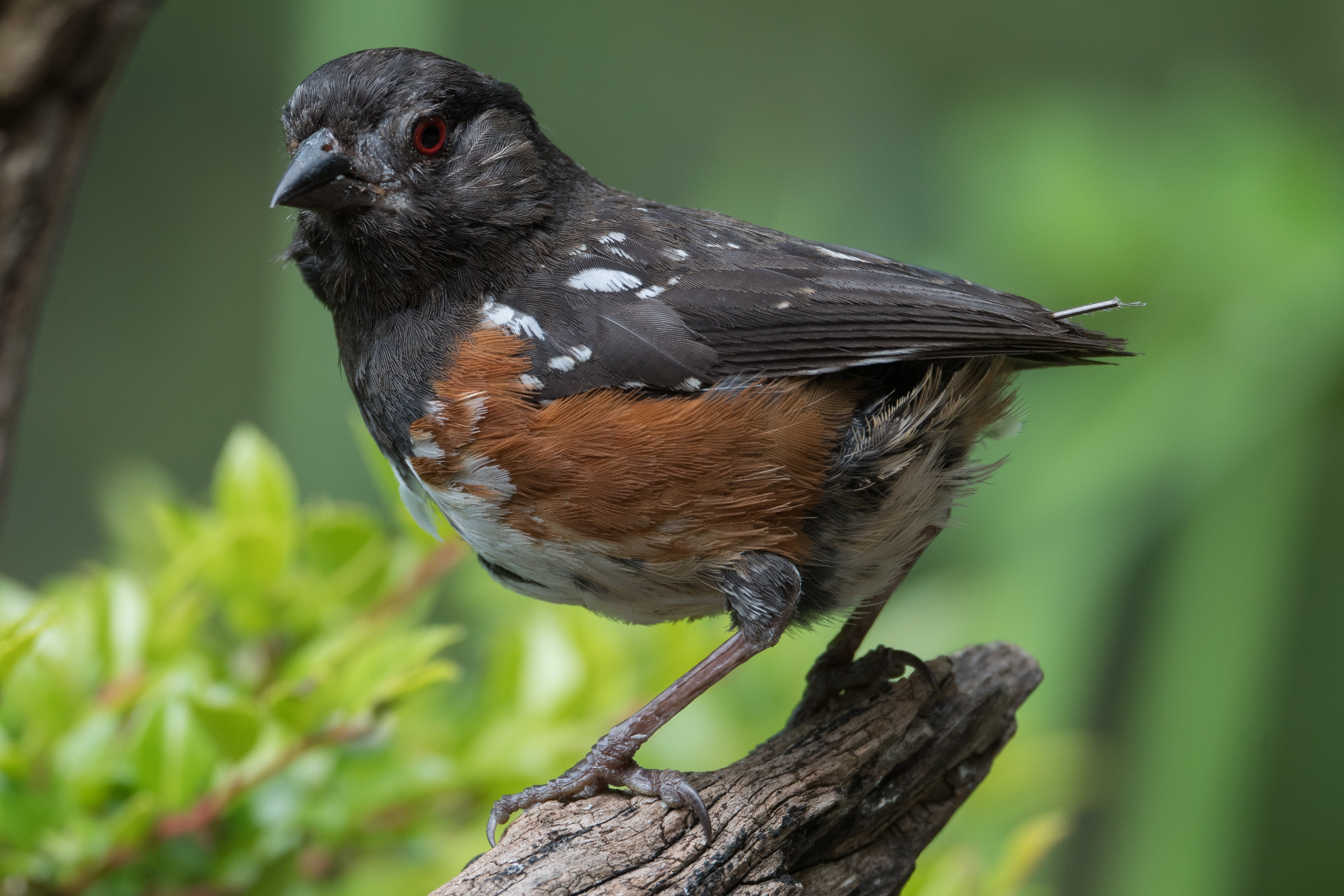
Next up, an adorable Warbling vireo which visited the watercourse but never accessed the water.
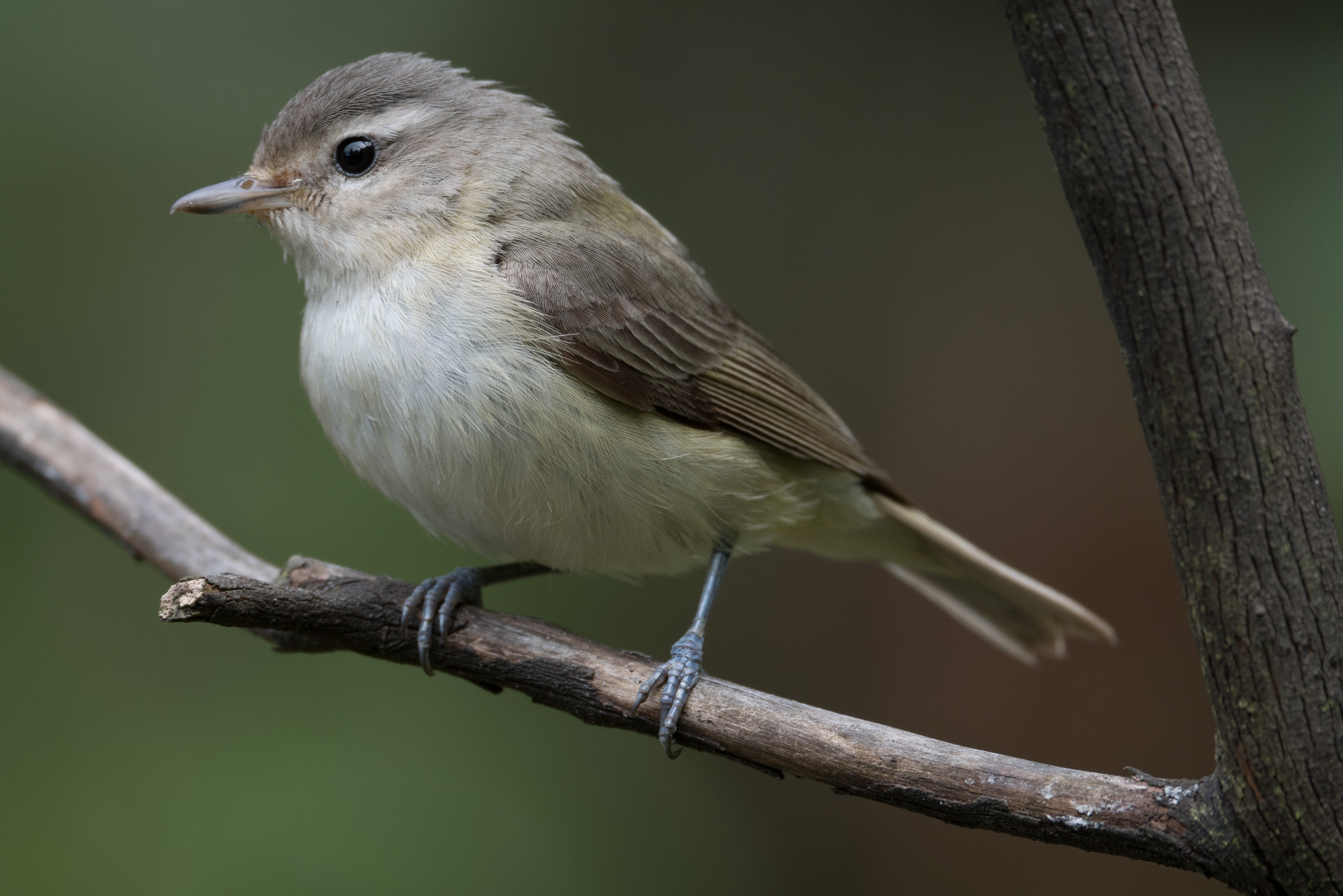
If this wasn’t enough, a Hutton’s vireo, which closely resembles a Ruby-crowned kinglet, paid us a visit. I initially thought the bird was a kinglet but realized my mistake once I began processing my photos.
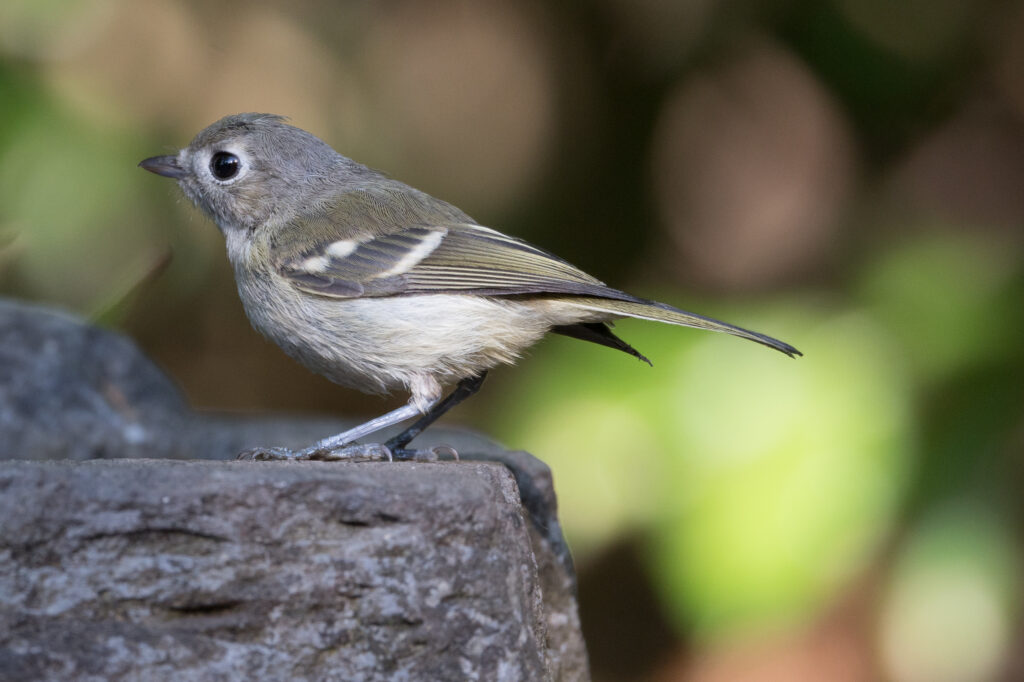
We’ve had at least three and quite possibly more coveys of California quail parade through the yard this summer. The only way we can tell the difference in coveys is by the size and number of chicks, but trying to count the chicks is an almost impossible task as they dart around into and out of cover. And the number in the covey tends to decline day after day as chicks are lost to predators. This year use have as numerous a population as we’ve had in several years.
In early July we had an accipiter make a pass at a covey but all the chicks managed to dart into our brush pile for safety. I expected that once an accipiter had discovered the quail in our yard it would be a regular visitor but I’ve seen it only that once.
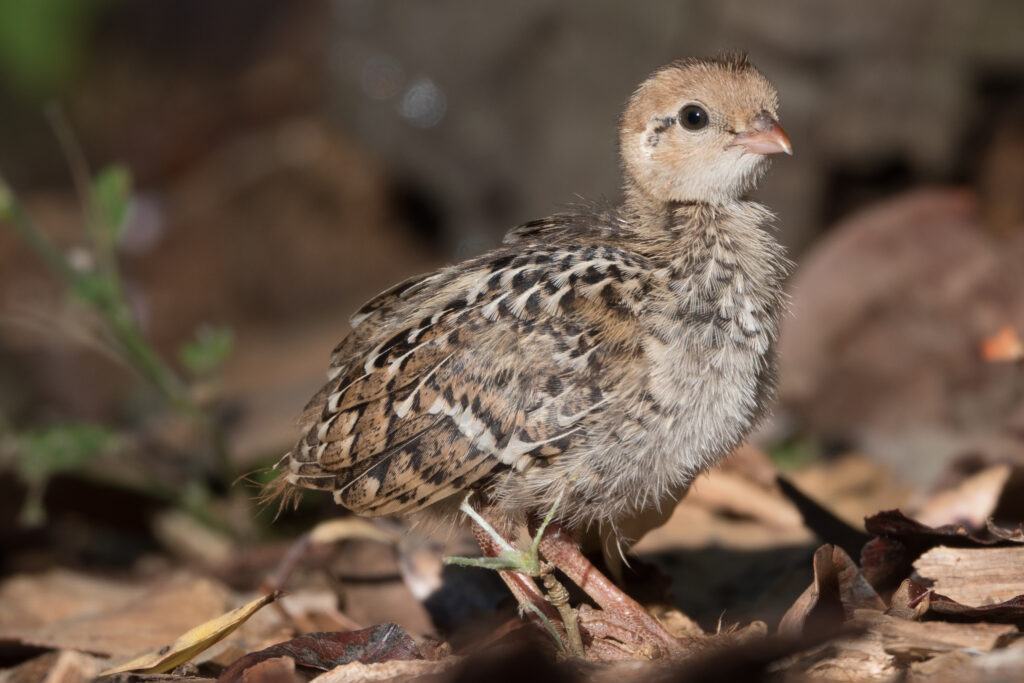
By the end of the day (just before 8pm) I had taken 275 photos in approximately four hours of birding in the yard. I had photographed visits from two species of warblers, two species of vireos, Black-headed grosbeak(s), a creeper, House wrens feeding young and one of our coveys of quail… along with a host of other species.
